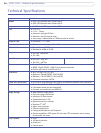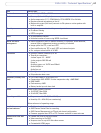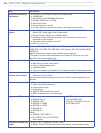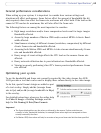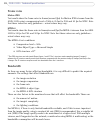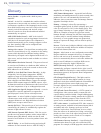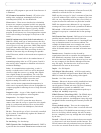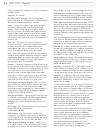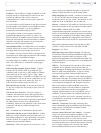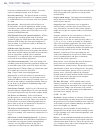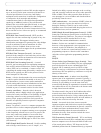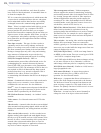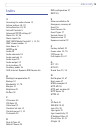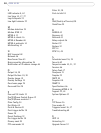
75
AXIS 233D - Glossary
See also TCP.
IP address - An IP address is simply an address on an IP
network used by a computer/device connected to that
network. IP addresses allow all the connected
computers/devices to find each other and to pass data
back and forth.
To avoid conflicts, each IP address on any given network
must be unique. An IP address can be assigned as fixed,
so that it does not change, or it can be assigned
dynamically (and automatically) by DHCP.
An IP address consists of four groups (or quads) of
decimal digits separated by periods, e.g. 130.5.5.25.
Different parts of the address represent different things.
Some part will represent the network number or address,
and some other part will represent the local machine
address. See also IP (Internet Protocol).
Inputs/Outputs (I/Os) - The digital I/Os on, for example, a
network camera can be used to connect any device that
can toggle between an open and a closed circuit.
For example, if a door switch is used as an input device,
opening the door could trigger the upload of video images
and the sending of notification messages.
An output might, for example, be used to automatically
start a siren when there is a motion detection trigger.
I-VOP - See VOP.
JPEG (Joint Photographic Experts Group) - Together
with the GIF file format, JPEG is an image file type
commonly used on the web. A JPEG image is a bitmap,
and usually has the file suffix '.jpg' or “.jpeg”. When
creating a JPEG image, it is possible to configure the level
of compression to use. As the lowest compression (i.e. the
highest quality) results in the largest file, there is a
trade-off between image quality and file size.
kbit/s (kilobits per second) - A measure of the bit rate,
i.e. the rate at which bits are passing a given point. See
also Bit rate.
LAN (Local Area Network) - A LAN is a group of
computers and associated devices that typically share
common resources within a limited geographical area.
Linux - Linux is an open source operating system within
the UNIX family. Because of its robustness and
availability, Linux has won popularity in the open source
community and among commercial application
developers.
Lux - A standard unit of illumination measurement.
MAC address (Media Access Control address) - A MAC
address is a unique identifier associated with a piece of
networking equipment, or more specifically, its interface
with the network. For example, the network card in a
computer has its own MAC address.
Manual iris - This is the opposite of an auto iris, i.e. the
camera iris must be adjusted manually to regulate the
amount of light allowed to reach the image sensor.
Mbit/s (Megabits per second) - A measure of the bit rate,
i.e. the rate at which bits are passing a given point.
Commonly used to give the “speed” of a network. A LAN
might run at 10 or 100 Mbit/s. See also Bit rate.
Monitor - A monitor is very similar to a television set, but
lacks the electronics to pick up regular television signals.
Motion JPEG - Motion JPEG is a simple
compression/decompression technique for network video.
Latency is low and image quality is guaranteed, regardless
of movement or complexity of the image. Image quality is
controlled by adjusting the compression level, which in
turn provides control over the file size, and thereby the bit
rate.
High-quality individual images from the Motion JPEG
stream are easily extracted. See also JPEG and GIF.
Megapixel - See Pixel.
MPEG (Moving Picture Experts Group) - The Moving
Picture Experts Group develops standards for digital video
compression. It operates under the auspices of the
International Organization for Standardization (ISO). The
MPEG standards are an evolving series, each designed for
a different purpose.
MPEG-2 - The designation for a group of video coding
standards, and is typically used to encode video for
broadcast signals, including digital satellite and Cable TV.
MPEG-2, with some modifications, is also the coding
format used by standard commercial DVD movies.
MPEG-4 - MPEG-4 is a group of video coding standards
and related technology. The primary uses for the MPEG-4
standard are web (streaming media) and CD distribution,
conversational (videophone), and broadcast television.
Most of the features included in MPEG-4 are left to
individual developers to decide whether to implement
them or not. This means that there are probably no
complete implementations of the entire MPEG-4 set of
standards. To deal with this, the standard includes the
concept of “profiles” and “levels”, allowing a specific set
of capabilities to be defined in a manner appropriate for a
subset of applications.
Multicast - Bandwidth-conserving technology that
reduces bandwidth usage by simultaneously delivering a
single stream of information to multiple network
recipients. See also Unicast.
Network camera (Network video camera) - A network
camera is a camera and computer combined in one
intelligent unit. It captures and sends live video directly
over an IP network such as a LAN, intranet or the
Internet. Users can view and/or manage the camera using
a standard web browser or application software from any
local or remote computer on a network. The camera
allows multiple authorized viewers from different



